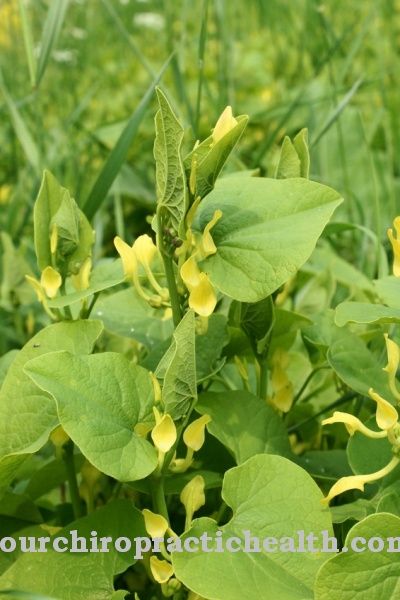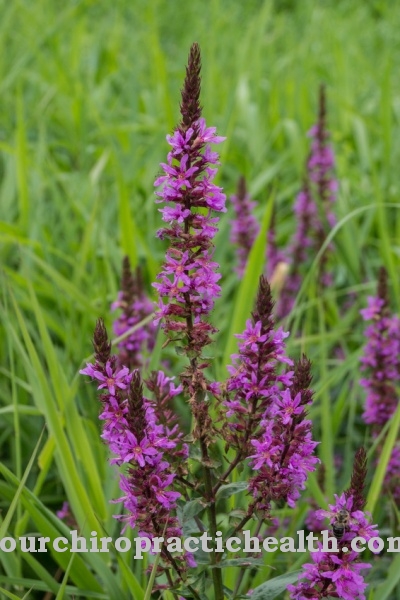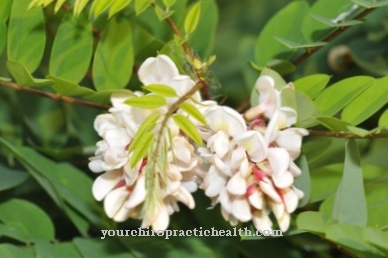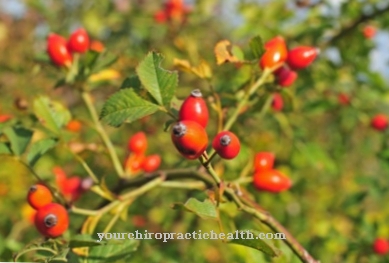It used to be Arum as a plant of witches and wizards and was mainly used as a magic elixir and medicinal herb. Since the plant can cause severe burns even with mere skin contact, the herb was only used in low potency at that time because of the enormous risk of poisoning. The plant, which occurs all over Europe and Asia, is now under nature protection, and homeopathy only rarely uses arum, despite its numerous possible effects.
Occurrence & cultivation of the arum

Of the Arum is a protected poisonous plant from the group of arum plants. In Central Europe there is only one other plant of this rather tropical plant family. There are different variants of the arum almost all over the world. Its distribution area extends from Africa through Europe to Asia. The plant most often grows as a wild growth in mixed deciduous forests, where its seeds are naturally spread.
All components of the plant are poisonous, because in addition to hot substances, the plants contain oxalate. The sweet-tasting berries have often caused severe poisoning with burns of the mouth and gastrointestinal tract. Other symptoms include skin rashes, inflammation of the oral mucosa and blistering of the skin. When consuming the raw fruits, the sweet taste quickly leads to an overdose.
The mere skin contact with parts of the plant can cause skin symptoms. Higher doses can cause cardiac arrhythmias and even paralysis. As soon as the arum is boiled, the poison is lost and the plant can be safely consumed. The same applies to the dried components of the arum, the poison of which is largely neutralized. In the event of overdosing or the consumption of the raw leaves and fruits, medicinal charcoal can in turn reduce the symptoms of poisoning.
Effect & application
In the distant past, people believed in the magic of the Arum. The plant therefore served the magic of love in many rituals. But it should also partly avert bad dreams and keep snakes away. In times of food shortages, some of the plants were also collected for the purpose of nutrition. The roots were then dried to neutralize the poison. The root ball was then ground up and used as flour. All these areas of application of the plant are lost today.
One no longer believes in the magic of the arum and today's people are no longer dependent on the root meal of the plant, since flour is relatively inexpensive in the supermarket. The rhizome of a Chinese variant of the arum is partly still used for medicinal purposes. The active ingredients aroine, aronine, aronidine as well as oxalate raphides and free oxalic acid can be used against scarlet fever, measles and mumps as well as paralysis, inflammation and poorly healing wounds or rheumatism.
This form of application also goes back to a long tradition, because centuries ago the plant was known for its diverse healing effects. At that time the arum was used specifically for the treatment of respiratory diseases. In order not to cause poisoning, the juice of the plant was heavily diluted or the plant components were dried before consumption. The users used no more than a few drops or crumbs of the plant in a glass of water.
The leaves of the arum tree were often used as a poultice to alleviate rheumatic symptoms and sprains. Even today there are some homeopathic preparations with tiny amounts of the Chinese arum that can be used against all of the symptoms mentioned. According to German guidelines, only those subterranean parts of the plant that were collected before the leaves developed may be used for these preparations.
Singers with voice problems, for example, sometimes have such a preparation with low potencies of arum prescribed. Since higher potencies of the plant, in addition to chemical burns, produce roughly the same symptoms as the plant against which the plant was originally used, the arum should never be diluted or processed on your own. The use of the mentioned preparations must also be discussed with a doctor in advance.
Importance for health, treatment & prevention
The medicinal importance of arum has declined to the present for a variety of reasons. One reason is the rarity of the plant. Since the plant is now under nature protection, collecting and processing the arum is punishable in this country. The plant is therefore only rarely used for medicinal purposes in Europe. The compresses against rheumatism and compression are practically no longer used, as this form of application was previously restricted primarily to private individuals who had collected the leaves of the plant themselves.
The many side effects and the risk of overdosing have also made arum less of medical importance. Homeopathy rarely uses the few orally taken preparations with low potencies of the Chinese growth form for sore throats, coughs and colds. Equally seldom are corresponding preparations prescribed against throat, gastric and intestinal inflammation today.
These forms of use have become so rare not only because of the rarity of the arum or the risk of poisoning.Even more decisive for the decline in medical importance is the fact that a large number of preparations with similar effects are available today, which are associated with fewer side effects and risks.













.jpg)

.jpg)
.jpg)











.jpg)